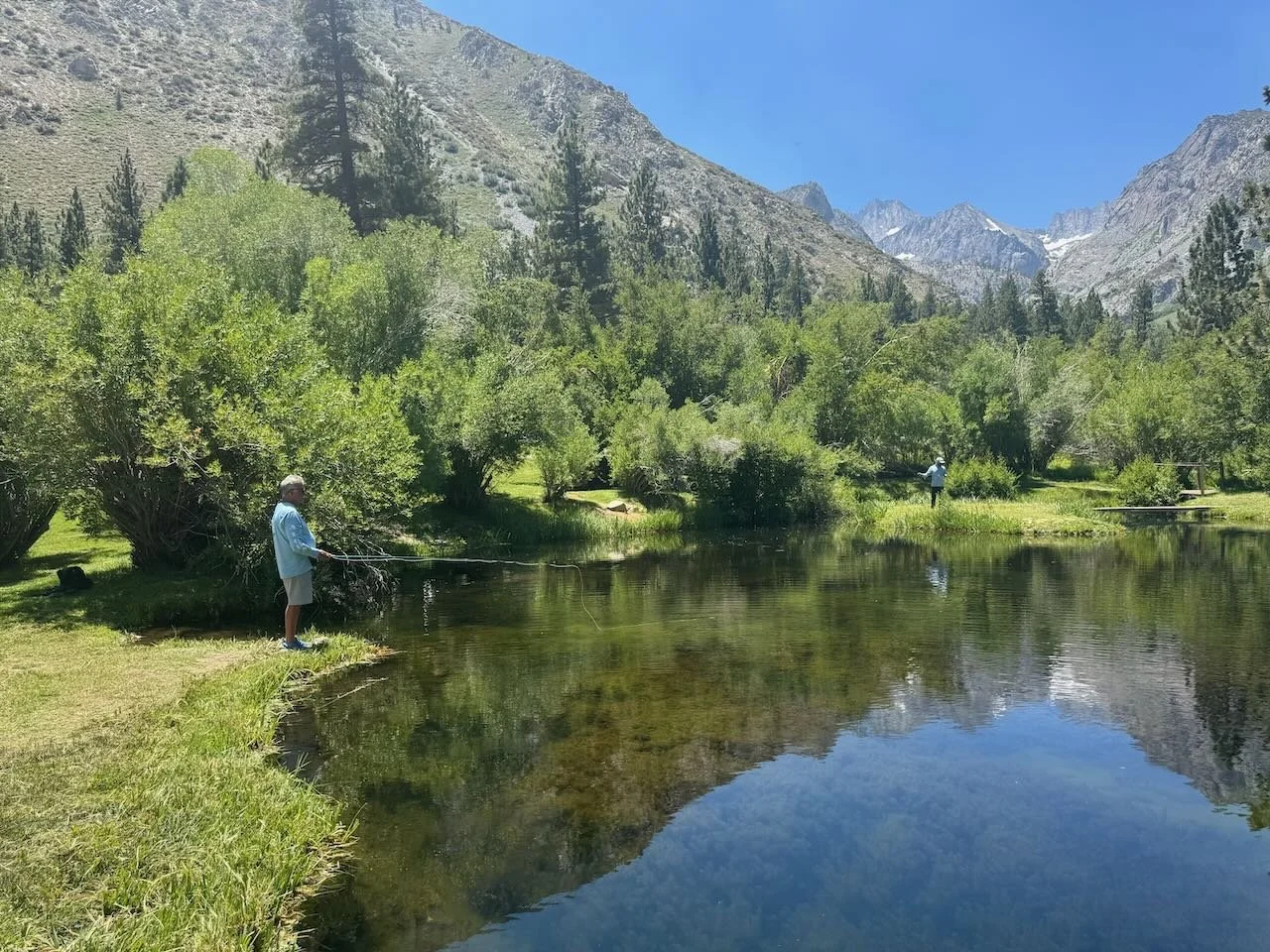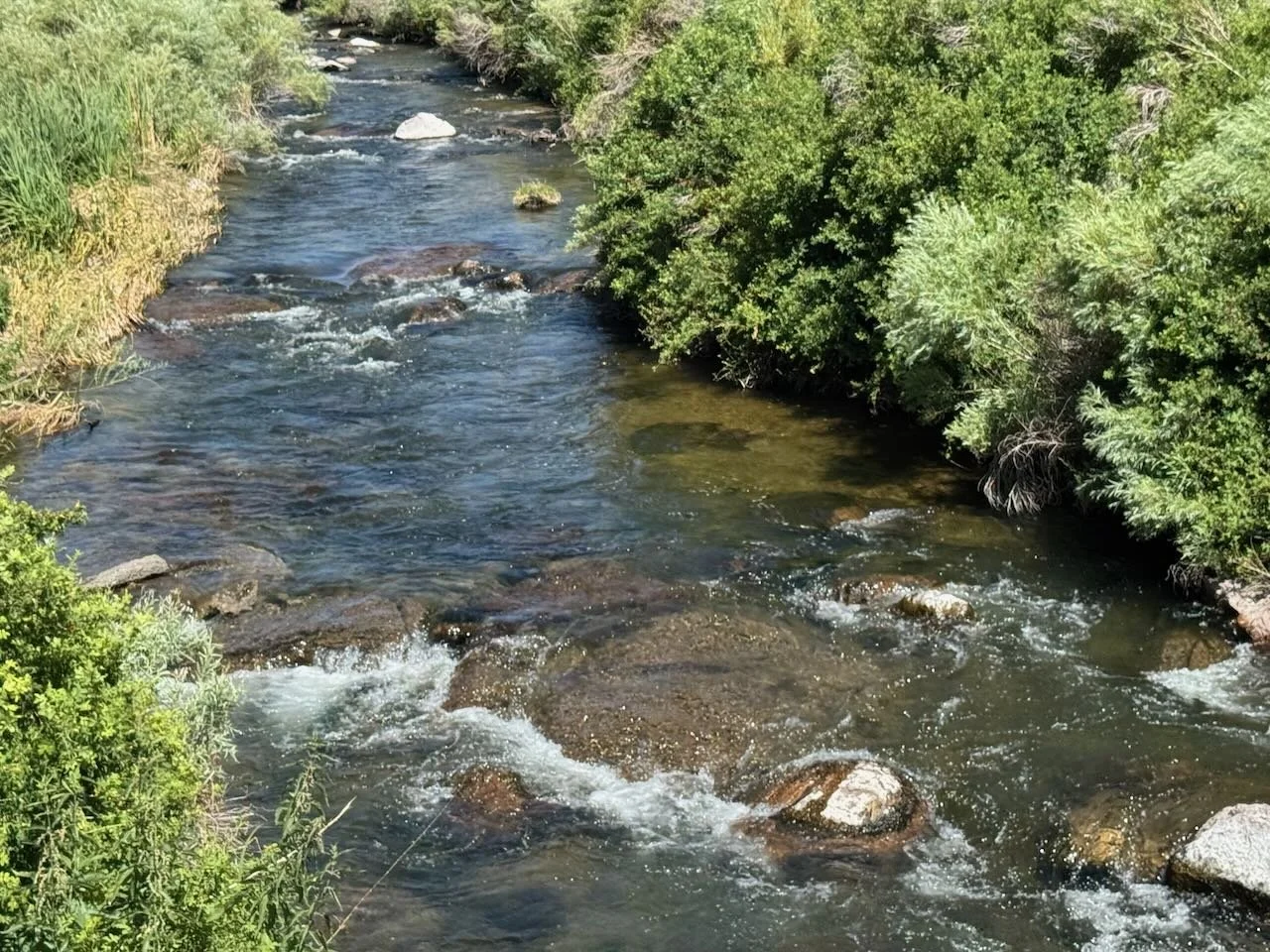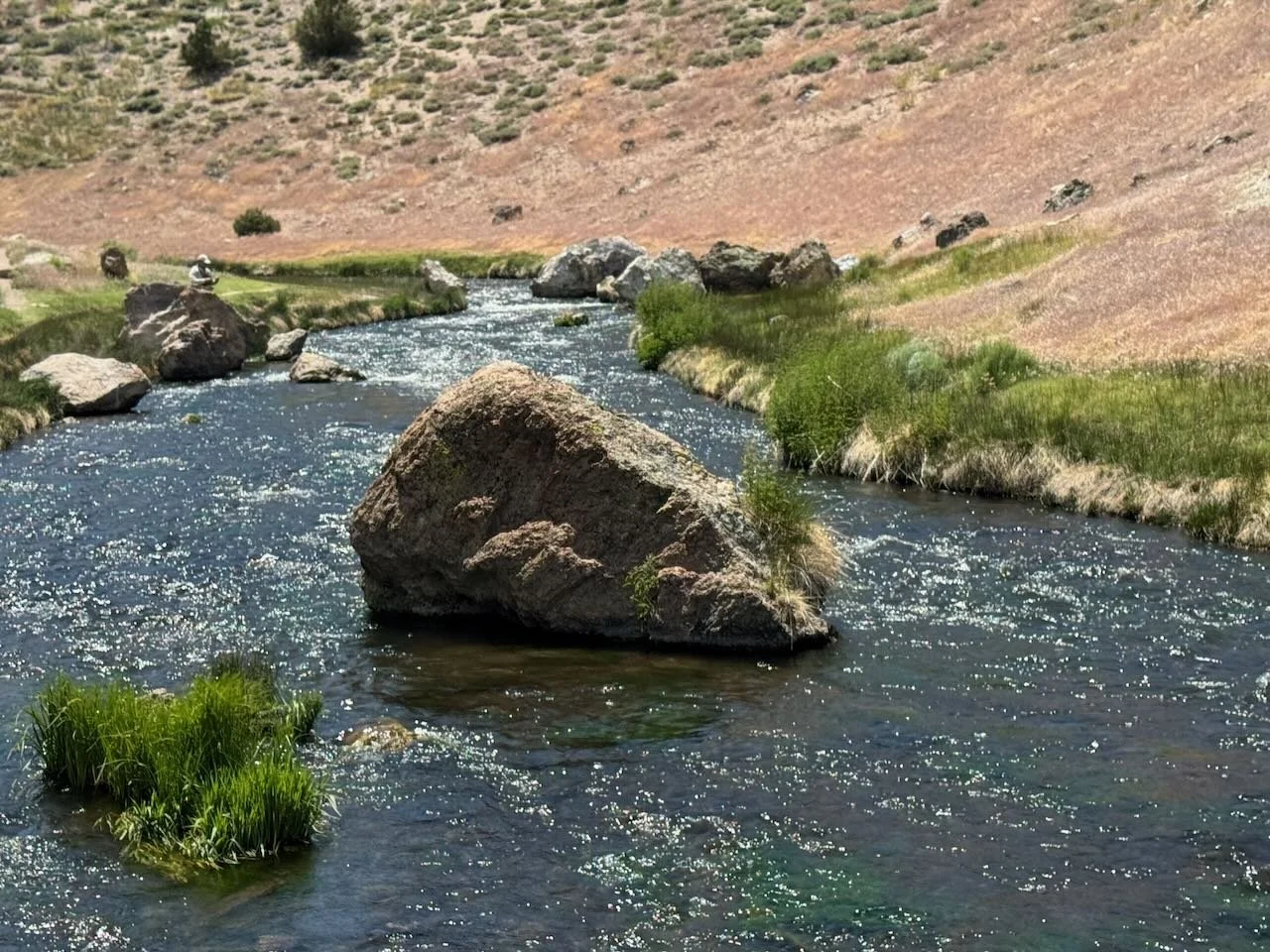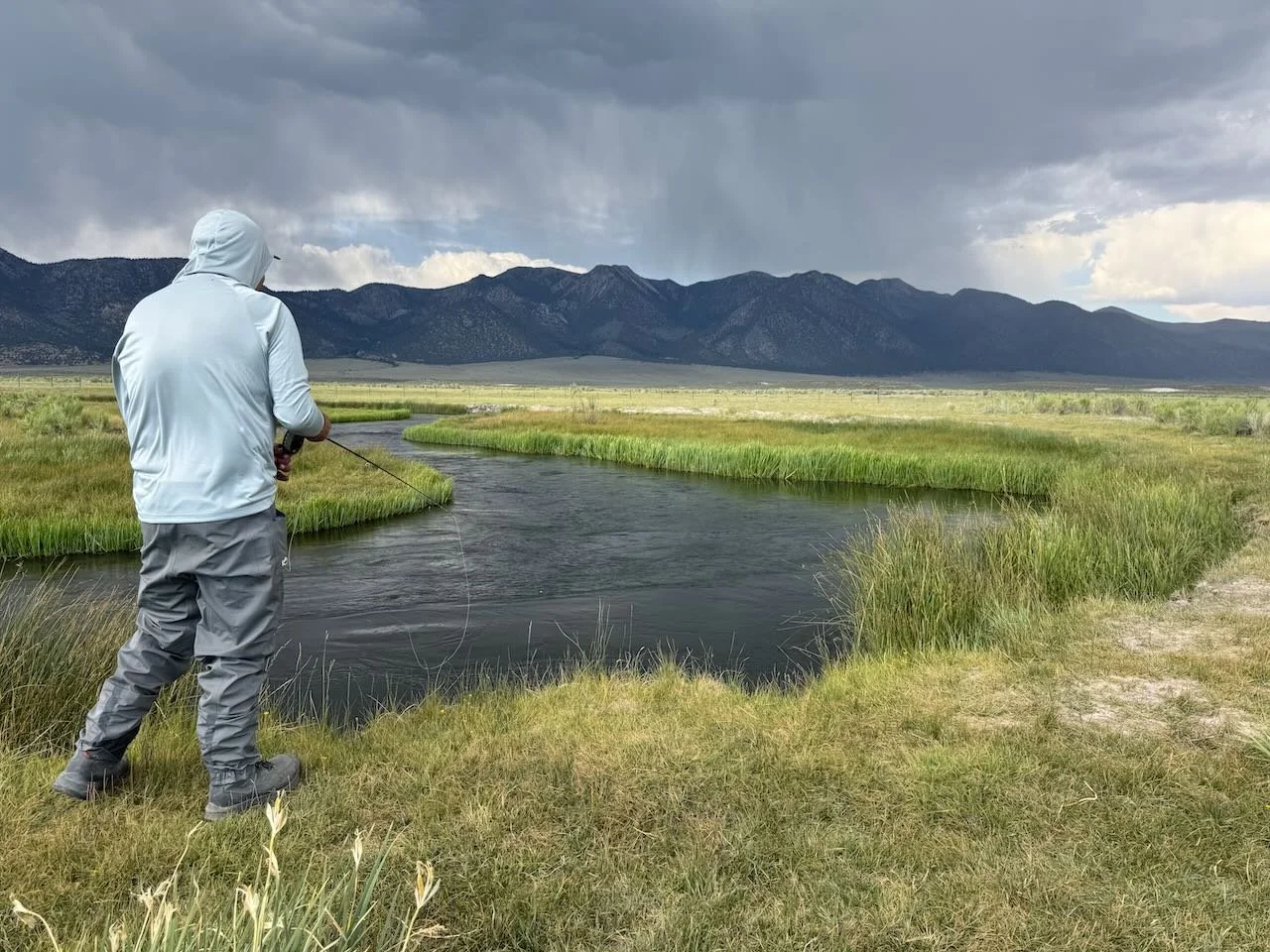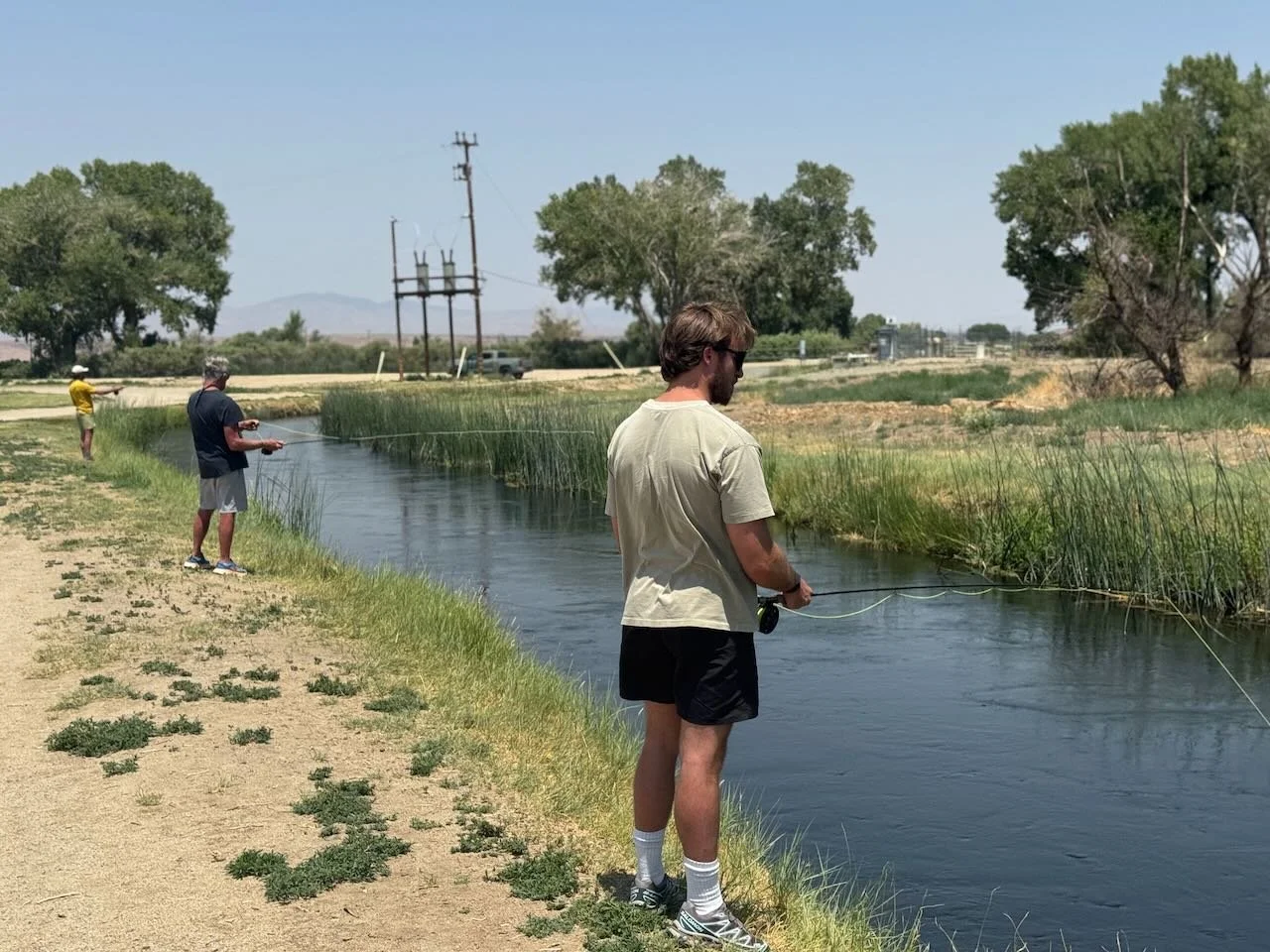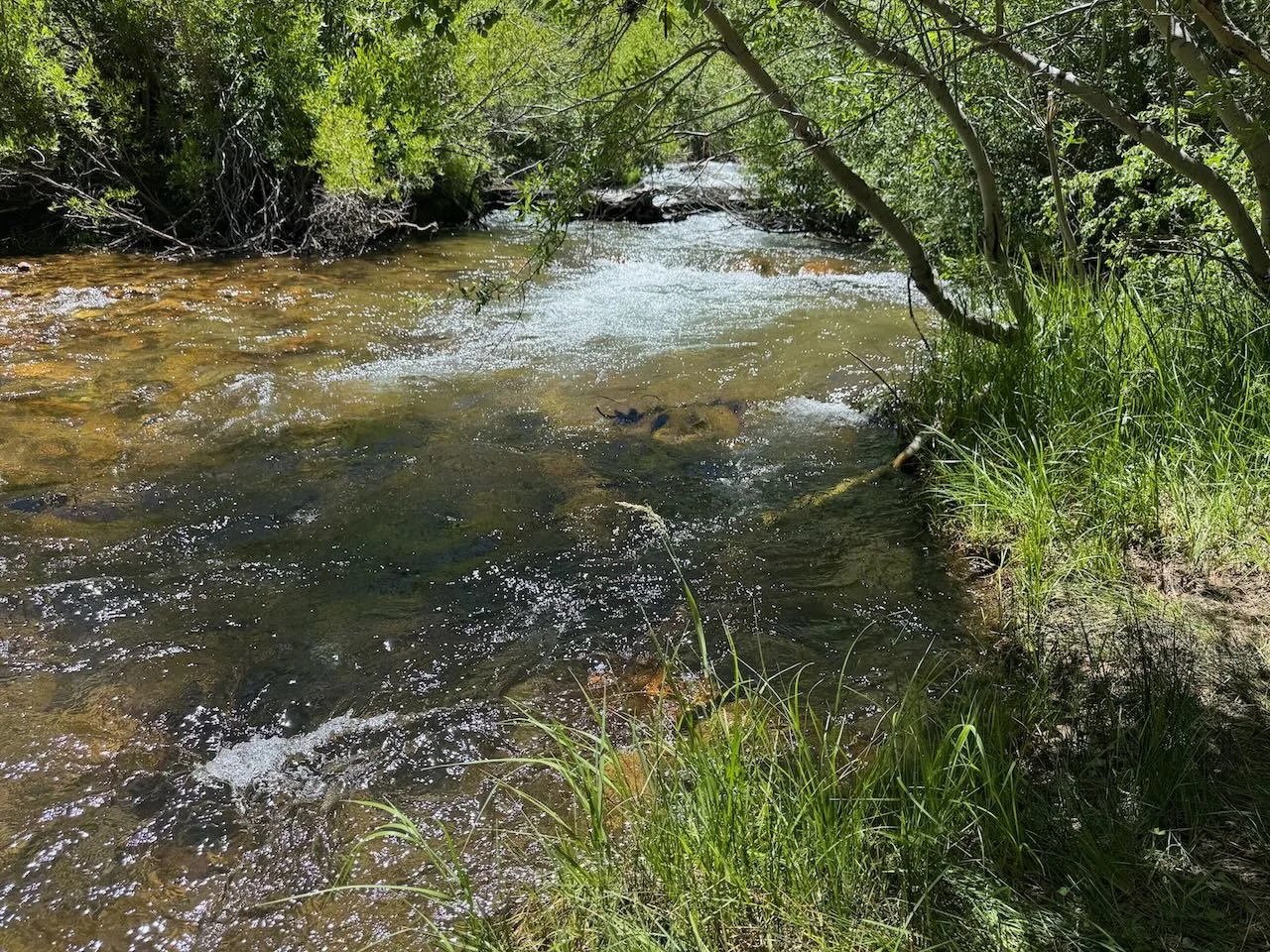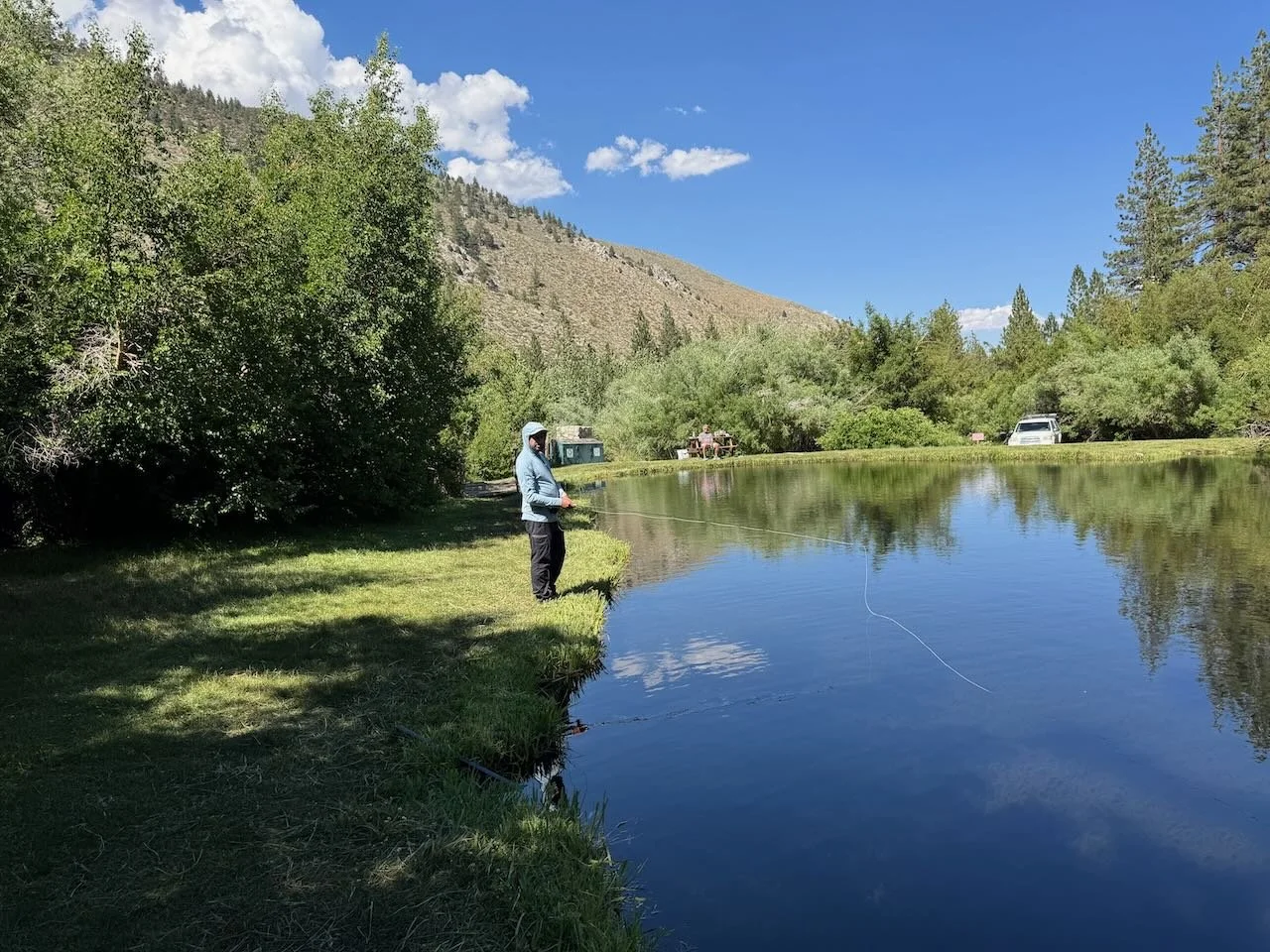It’s hot in the Owens Valley and time to head up into the Eastern Sierra in search of cooler temperatures and waters filled with trout feeding on insect fly fishers can imitate with their flies. Winds are typical for this time of year and if fly fishers want to avoid the winds they will need to be on the waters before early afternoon when the winds come up every day. Midges are most prevalent this time of the year in the still waters of the Eastern Sierra. Particularly in those lakes that require a hike to fly fish the shores of backcountry lakes. Mayflies, stoneflies and caddis flies are hatching and feeding the wild trout that inhabit the waters of the Eastern Sierra. Be sure to have insect repellant handy as it is mosquito season.
Escaping the heat of the Owens Valley by heading up to high alpine waters to fly fish is a great way to spend a day fishing in the Eastern Sierra.
Owens River Gorge:
It was 104 at the base of the grade when I drove home from the upper Owens River. If you’re headed into the gorge be aware of the heat if you’re planning on hiking out in the early afternoon. Right not it’s best to head into the gorge early and get out before the heat intensifies. This is prime water for wet wading and fishing with a dry and dropper rig. For the nymphs fish with size 18 tiger midges, size 18 zebra midges, size 18 olive quilldigons, size 16 bead head flash back gold ribbed hare’s ears and size 18 bead head flash back pheasant tail nymphs. For the dry flies use high visible and high floatable patterns like stimulators in size 16, Adams parachutes in size 16, elk hair caddis in size 16 and Chernobyl ants in size 12. Wet wading allows fly fishers to cover a lot of water and avoid the thickets of stinging nettles and rose bushes lining the banks. If you want to learn how to fly fish the Owens River Gorge book a trip with Sierra Bright Dot guide Richard Lancaster who is on the water almost evert week during the summer months. Don’t get caught down in the gorge in summer time with not enough water.
Wet wading in the Owens River Gorge is a great way to spend a morning fly fishing for wild brown trout.
Hot Creek
Interpretive Site:
Hot Creek Interpretive site provides the most consistent dry fly hatches in the Eastern Sierra. The mornings start with the trico hatch. Start fishing with a size 22 trico female parachute. Then switch to a size 22 trico spinner to imitate the trico spinner fall. The upstream caddis migration is a time for caddis to crash on the water and the trout are just waiting to slurp up any caddis that lands on the water. Fish with a size 20 gray elk hair caddis and gray parachute caddis. After the caddis migration look for the mayfly hatches. There is a good blue wing olive hatch and look for pale morning duns scattered among the blue wing olive hatch. Fish with size 16 pale morning dun parachutes, size 16 pale morning dun sparkle duns, size 20 blue wing olive parachutes and size 20 blue wing olive sparkle duns. If you are on the creek in the evening look for hatches of male tricos and caddis.
Weed beds in the canyon is making a drag free drift tough with nymphs and dry flies..
Hot Creek
Canyon Section:
Weed beds in the canyon section are at full growth making it hard for fly fishers nymphing to get a drag free drift. Fishing with dry flies allow the flies to float over the weed beds with little snagging of the weeds. Key to success is to float your dry fly in the tiny lanes between the weed beds. It’s a tough drift to get, but it can be done. Size 22 female trico parachutes, size 22 trico spinners, size 20 blue wing olive parachutes, size 20 gray elk hair caddis and size 20 gray parachute caddis are fooling the wild trout that are feeding on caddis and mayflies in the mornings to early afternoons.
Afternoon rain showers cool off fly fishers plying the waters of the upper Owens River in the afternoon.
Upper Owens River
Above Benton Crossing Bridge:
The Eastern Sierra heat wave has slowed down the fly fishing on the upper Owens River. Fly fishers who know how to drift their nymphs and dry flies with no drag are catching a few trout in the morning. There are a few 14 to 20 inch rainbows and browns that are feeding on nymphs in the mornings in the deep holes and runs. Use size 18 olive quilldigons, size 18 bead head flash back pheasant tail nymph and size 12 stoner nymphs. The resident rainbow and brown trout have not showed up in the numbers expected. Use size 16 elk hair caddis, size 16 Adams parachutes, size 16 pale morning dun parachutes and size 18 blue wing olive parachutes for the trout feeding on the surface middle of the day. Nymphing for the resident trout use size 16 SOS nymphs, size 18 hot spot pheasant tail nymphs, size 18 olive quilldigons, size 20 blood midges, size 20 zebra midges and size 20 tiger midges.
Bishop Creek Canal is a great place to practice roll cast, water load casts and presenting the flies gently onto the water’s surface.
Bishop Creek Canal
Behind Bishop Veterinary Hospital:
Mid-day heat has slowed down the fishing middle of the day on Bishop Creek Canal. Fish the canal in the mornings tell 11:00 A.M. at the latest. There is a midge hatch and mayfly hatch bringing the trout to the surface. Fish with size 16 elk hair caddis, size 18 pale morning duns and size 18 Adams parachutes. Size 12 stoner nymphs, size 18 olive quilldigons, size 16 hot spot pheasant tail nymphs, size 18 bead head flash back pheasant tail nymphs and size 18 tiger midges fished under an indicator or a Euro rig is fooling wild brown trout and hatchery rainbows.
High flows, cold water and bush whacking through the stream side vegetation makes Bishop Creek a tough spot to fly fish for novices.
Bishop Creek Canyon
Weir Pond:
With all the heat in the Owens Valley it’s time to head up Bishop Canyon and find a place to fish a dry and dropper rig for wild brown trout, rainbows and brook trout. One of the best fly fishing spots in the canyon is below South Lake at Weir Pond. It’s too cold to wet wade so using waders and wool socks will keep the feet warm. For dry flies fish with size 16 elk hair caddis, size 16 royal Wulff’s, size 16 Adams Parachutes and size 16 stimulators. Nymph fish with size 16 bead head flash back gold ribbed hare’s ears, size 18 bead head flash back pheasant tail nymphs and size 18 tiger midges. Fish these flies individually or in combination as a dry and dropper rig.
Glacier Lodge Pond is a great spot to learn how to fly fish with a dry and dropper rig as rainbows are cruising around the crystal clear water looking for things to eat.
Big Pine Creek
Glacier Lodge Pond:
New fly fishers looking for a spot to get out of the heat of the Owens Valley and catch a few trout will find the pond at Glacier lodge the perfect place for a new fly fisher to learn how to catch trout on flies. This pond is designed for kids to learn to fish. For fly fishers using the pond practice catch and release to allow other anglers to catch the trout from the pond. A dry and dropper rig is the perfect way to fish the pond. For the dry fly try a size 16 Adams parachute. For the nymph try a size 18 tiger midge. Use two to three feet of 5X fluorocarbon tippet tied to the bend of the dry fly. This is a great place to learn to cast the flies on the water with a soft presentation. Learning when the trout takes your nymph is accomplished by watching for movement in the dry fly. Cruising trout allows the new fly fisher to determine what is working and what is spooking the trout.

